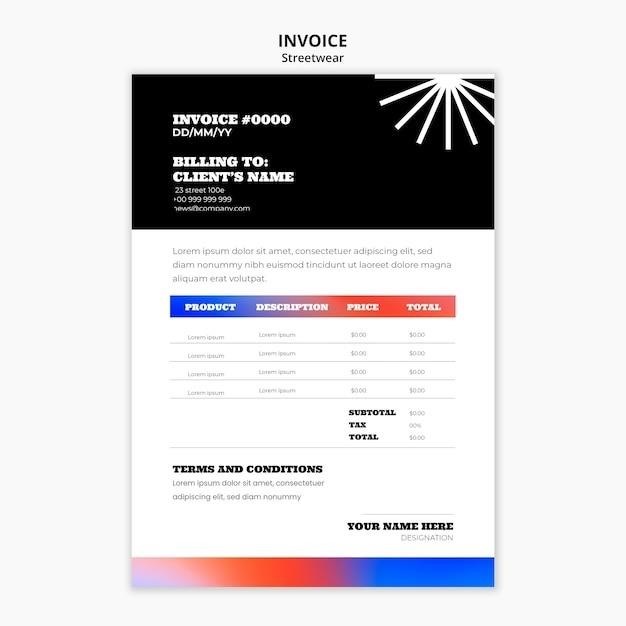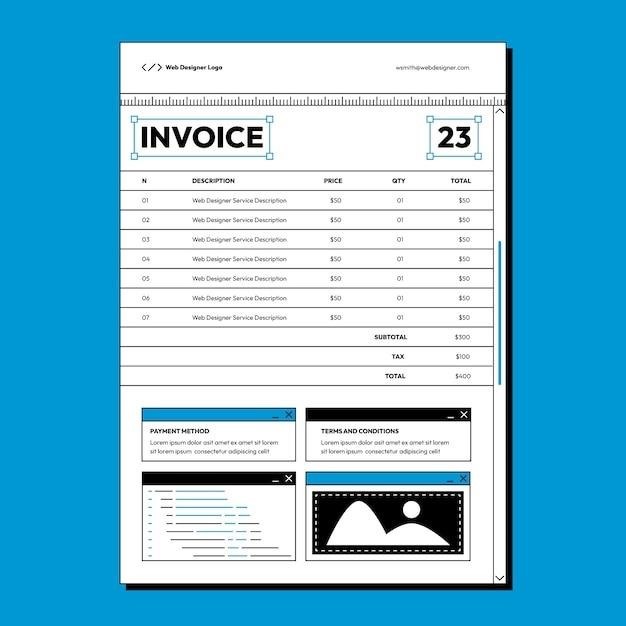D1 Form PDF⁚ A Comprehensive Guide
This guide provides a comprehensive overview of the D1 form, a crucial document for UK driving licence applications. Learn how to obtain, complete, and submit this form efficiently, avoiding common errors. We’ll also explore alternative forms and helpful resources for a smooth application process. Discover online and offline methods for acquiring the form and accessing additional support if needed. This guide ensures a successful driving licence application.
What is a D1 Form?
The D1 form is a vital application form used by the Driver and Vehicle Licensing Agency (DVLA) in the United Kingdom. It’s the primary document for individuals applying for a provisional driving licence, essential before you can legally learn to drive a car, motorcycle, or moped. This form requests comprehensive personal details, including your name, address, date of birth, and medical history. Crucially, it also specifies the type of driving licence you’re seeking, ensuring the DVLA processes your application correctly. The D1 form facilitates the initial steps in obtaining a UK driving licence, a fundamental requirement for many.
Incorrect or incomplete information on the D1 form can lead to delays or rejection of your application. Therefore, meticulous accuracy is paramount when completing this document. The form serves as the foundation for your driving licence application, initiating the process of verifying your identity and eligibility to drive in the UK. The D1 form is your first step towards legal driving in the UK.
Obtaining the D1 Form⁚ Online and Offline Methods
Acquiring the D1 form for your UK driving licence application is straightforward, offering both online and offline options to suit your preference. For the digitally inclined, the DVLA website provides a downloadable version of the D1 form in PDF format. This allows for immediate access and convenient completion at your leisure. Simply download, print, and fill out the form at your convenience. Remember to ensure you have the latest version to avoid potential issues with your application. The online method saves time and eliminates the need for travel.
Alternatively, if you prefer a more traditional approach, or lack internet access, you can obtain a physical copy of the D1 form from various Post Office branches across the UK. Many Post Offices offer DVLA services, stocking the necessary forms for driving licence applications. This is a reliable method for those who prefer a tangible form or find online access challenging. Check your local Post Office’s services to confirm D1 form availability before visiting. Both online and offline methods provide equal access to the crucial D1 form, ensuring ease of access for all applicants.
Filling Out the D1 Form⁚ A Step-by-Step Guide
Completing the D1 form accurately is crucial for a smooth application process. Begin by carefully reading all instructions before starting. Provide all requested information legibly, ensuring accuracy in personal details such as your full name, address, date of birth, and National Insurance number. Pay close attention to sections concerning your medical history and eyesight, providing truthful and complete answers. Any inaccuracies could lead to delays or rejection.
Clearly indicate the type of driving licence you’re applying for (car, motorcycle, etc.). Double-check all entries before submitting to avoid errors. Use black ink to ensure readability. If you need assistance understanding any section, refer to the DVLA’s online guidance or contact their helpline for clarification before proceeding. A well-completed form minimizes processing time and increases the likelihood of a successful application. Take your time and meticulously fill out every section to avoid delays and potential complications.
Submitting the Completed D1 Form
Once your D1 form is fully completed and double-checked for accuracy, the submission method depends on whether you downloaded a digital or paper version. For digital forms, follow the online instructions for electronic submission. This often involves uploading the completed form and supporting documentation through a secure portal. Ensure all files are in the correct format and size to avoid rejection. If you obtained a paper copy, you must send it via post. Include all necessary supporting documents, such as passport photos and medical certificates, as detailed in the form’s instructions.
Use appropriate postage to ensure timely delivery. Keep a copy of the completed form and all supporting documents for your records. The DVLA’s website provides details on the current processing times, allowing you to track your application’s progress. After submitting, you’ll receive confirmation. Allow sufficient processing time and refrain from contacting the DVLA unless there are unforeseen delays beyond the stated timeframe. Accurate submission procedures significantly increase your chances of a quick and successful application processing.
Common Errors and How to Avoid Them
Completing the D1 form accurately is crucial for a smooth application. One common mistake is providing incorrect or incomplete personal information. Double-check all details against your identification documents to ensure accuracy. Another frequent error is failing to meet the photographic requirements. Use a recent, high-quality passport-style photograph that meets the DVLA’s specifications. Overlooking necessary supporting documents, such as medical certificates if applicable, also causes delays. Carefully read the instructions to identify all required attachments. Illegible handwriting can hinder processing; use a clear, legible font if completing a paper form. Finally, ensure you select the correct licence type for your needs. Carefully review all sections before submission to prevent errors and delays in processing your application.
Addressing these common issues will significantly improve the likelihood of a quick and successful outcome. Utilize online resources and guides to ensure compliance with all the necessary regulations. Remember, accuracy and attention to detail are essential for a hassle-free application process.

Alternative Forms and Applications
Beyond the D1, the DVLA offers other forms for various driving licence needs. Explore options like the D2 form for lorry, minibus, or bus licences, and discover other relevant DVLA forms and services to streamline your processes.
D2 Form⁚ Application for Lorry, Minibus, or Bus Driving Licence
The D2 form serves as the application for a provisional driving licence to operate larger vehicles such as lorries, minibuses, or buses within the United Kingdom. Unlike the D1 form used for car and motorcycle licences, the D2 requires specific information related to the type of heavy vehicle the applicant intends to drive. This includes details about the categories of vehicles (e.g., C1, C, D1, D) the applicant seeks authorization to operate. Before submitting, ensure all fields are accurately completed, including medical information, as this is crucial for determining fitness to drive heavy goods vehicles. The form may also require supporting documentation, such as medical certificates from a qualified physician. Completing the D2 form correctly and thoroughly is essential for a successful application and obtaining the necessary provisional licence to begin the process of driving these larger vehicles. Remember to check the DVLA website for the most up-to-date instructions and requirements. Obtaining a copy of the D2 form can be done either through online download or from participating Post Office branches. Incorrect or incomplete information may delay processing.
Other Relevant DVLA Forms and Services
Beyond the D1 and D2 forms, the Driver and Vehicle Licensing Agency (DVLA) offers a range of additional services and forms to manage driving licences and vehicle registrations. These include forms for updating personal details such as address changes, reporting lost or stolen licences, and applying for replacements. The DVLA website provides a comprehensive list of available forms, downloadable PDFs, and online services to streamline the process. For those needing assistance with specific forms or processes, the DVLA offers various contact methods, including phone support and online enquiry forms. These services cater to diverse needs, such as medical condition declarations, notification of driving licence endorsements, and applications for international driving permits. Remember to consult the official DVLA website for the most current information on available forms and services. It’s essential to use the correct forms for each specific request to ensure timely processing. The DVLA website contains detailed guides and instructions for completing each form correctly.

Additional Resources and Support
Need help with your D1 form? The DVLA website offers comprehensive guides and FAQs. Contact the DVLA directly via phone or online for personalized assistance. Many Post Offices also provide support and forms.
Contacting the DVLA for Assistance
The Driver and Vehicle Licensing Agency (DVLA) is the primary resource for all inquiries regarding the D1 form and driving licence applications in the UK. Their website provides a wealth of information, including downloadable forms, guides, and FAQs, addressing common issues and concerns. If you encounter difficulties navigating the online resources or require clarification on specific aspects of the application process, contacting the DVLA directly is recommended. They offer various contact methods tailored to individual needs and preferences. You can reach out via telephone, email, or through their online contact form, ensuring prompt and accurate assistance. The DVLA’s contact details are readily available on their official website, along with details about their operating hours and service availability.
For those who prefer a more personal approach, the DVLA also offers phone support, allowing you to speak directly with a representative who can address your questions and concerns in real-time. The trained professionals will guide you through the process, ensuring a smooth and efficient application experience. Remember to have your application details readily available when contacting them to streamline the process.
Frequently Asked Questions about D1 and Related Forms
Many individuals seeking to obtain a UK driving licence have common questions about the D1 form and related processes. A frequent query revolves around the accessibility of the form, with many wondering where to obtain it. The D1 form, the application for a driving licence, is available both online via the DVLA website and at select Post Office branches. Another common question pertains to the required supporting documentation. Applicants often seek clarification on necessary documents like proof of identity, address, and medical certificates. The DVLA website offers a comprehensive list of required documents for each application type. Concerns about the application process itself are also prevalent. Many seek guidance on completing the form accurately and ensuring a swift processing time. The DVLA website and various online guides offer step-by-step instructions and helpful tips to navigate the application process efficiently. Finally, questions frequently arise about the processing time and potential delays. The DVLA website provides estimated processing times, but individual circumstances may affect processing speed.